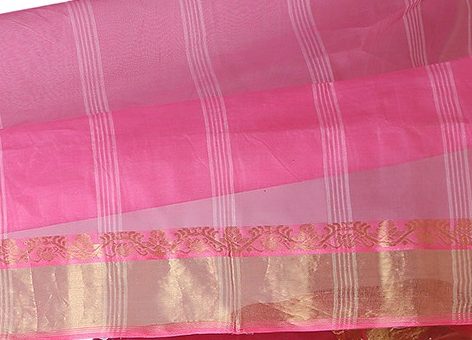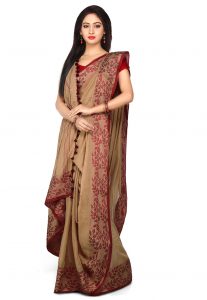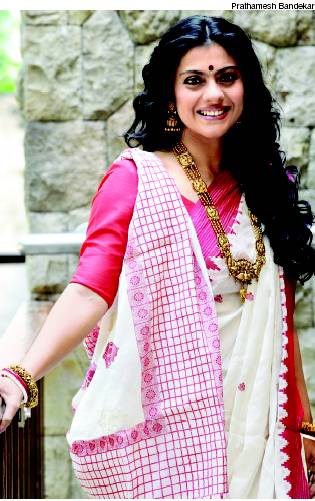
Bengali Sarees

Cotton Tant Saree
When one thinks about traditional Indian attire then saree is probably the first thing that comes to mind. Sari is primarily a long piece of cloth that is unstitched and usually 6 yards in length and is draped in a particular pattern. India is a land where unity lies in diversity and the there are different kinds of saris in India as well that change when you travel from state to state. Bengali sari is one of the most popular ones and their fame is not recent as they have a rich story to tell.
Origin and History
When it comes to Bengali saree, then Baluchari saree and tant saris are the two most popular types that one will come across. The tant saris became quite famous during the period when the Mughals used to reign in India. The British people tried hard to ruin the tant sari business in India but history bears witness to the fact that they did not succeed in their endeavors. The Baluchari saris, on the other hand, got their name from a small village in Bengal by the name of Baluchari and it was in the 18th century that Murshid Quli Khan, who was the nawab of Bengal brought the art of making Baluchari saris from Dhaka.
Sources of Inspiration

The Bengali sarees both Baluchari and tant are highly inspired by the rich Indian culture and are definitely a symbol of Bengal which is famous not only in the country but across the world. The Baluchari saris take their inspiration from the mythological scenes as they can be seen woven on the pallu of these saris. The Baluchari saris from Bengal have been awarded the status of being the ‘Geographical Indication of India.
Faces behind the fabric
The tant saris are woven all over West Bengal but places such as Hooghly, Nadia and Murshidabad can be regarded as the hubs of these saris. The weaving methods used for making these saris are traditional and the outcome is a light and colorful sari that is popular all over. The Baluchari saris are mainly manufactured in Murshidabad.
Varieties
The Baluchari saris are either made from Baluchari silk or from cotton. Both types are known for their vibrant colors and designs. The tant saris are made from cotton thread and have a distinguishing feature of being light and somewhat transparent.
Present Day Scenario
Time brings change and there have been significant changes in the making process of these saris as well. When you take a closer look at the Baluchari saris then you’ll find that more and more eco-friendly methods are being used to make these saris. The organic Baluchari saris use things such as used yarns as well as colors during the manufacturing process. The tant saris too have evolved with time and their popularity level has only increased. The modern tant saris have various patterns on them and some of them also depict modern art.
Innovations
Innovation is a word that is highly suited for both Baluchari and tant saris as they have undergone some changes that have retained their traditional value but have also added the modern touch to them.
Occasion dressing
The Baluchari saris have been a symbol of high status since the time they were first made. Each sari takes almost a week to complete and the final piece screams style and elegance. They have been a mark of aristocracy since the beginning. The tant saris, on the other hand, are quite affordable and ideal for summers and especially for the humid climate as they are light and made from cotton.
Suitability
The Baluchari saris are usually made from silk and can be worn all year long. The tant saris as we discussed earlier are best suited for the hot and humid weather conditions.
Maintenance
Both Baluchari and tant saris call for high maintenance as Baluchari are made from silk and the tant saris have the risk of tearing.
Interesting facts and comparisons
- The Baluchari saris from Bengal are five yards long and some forty two inches in width.
- The tant sari is 6 meter long when compared to a normal sari which happens to be 5.5 meters in length.
- Bright colors are the dominant feature of both tant and Baluchari saris and they are well known for the same.
- Flame red and purple are the two most common and popular colors for Baluchari saris.
References
Categories: Attires, Clothing Styles & Drapes

